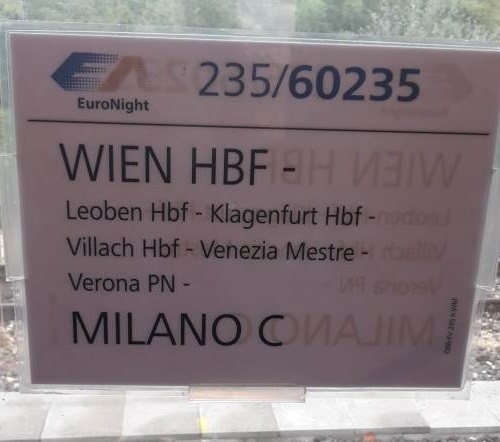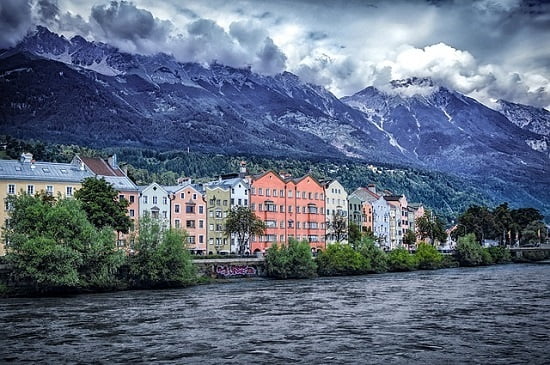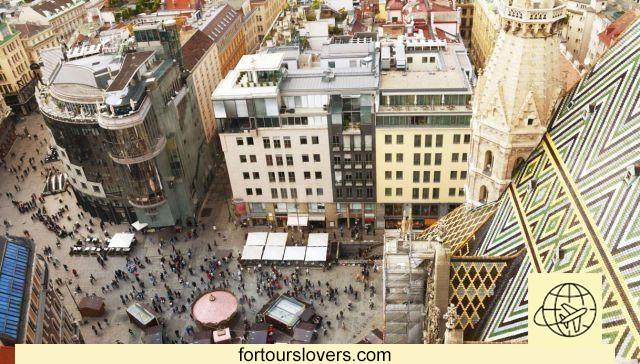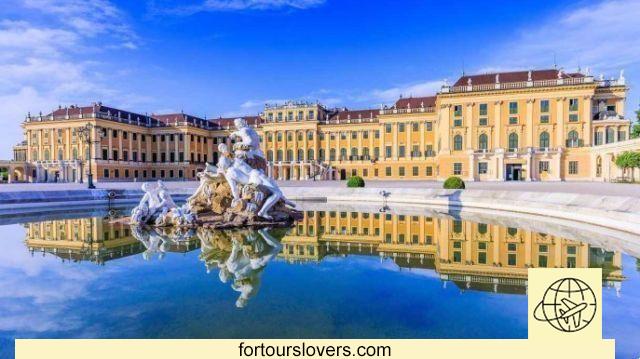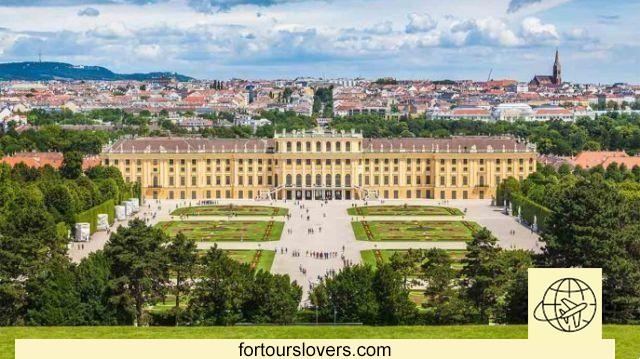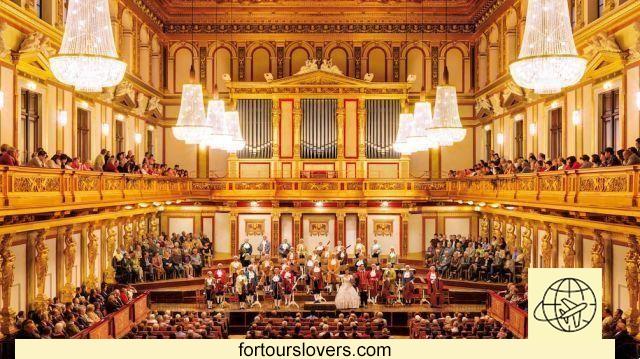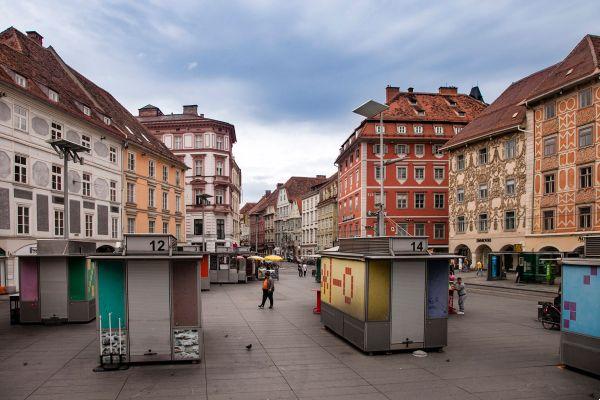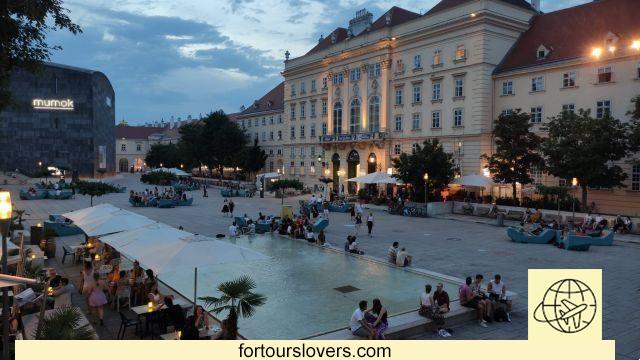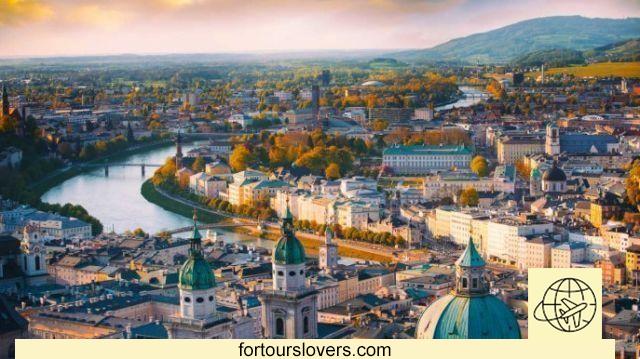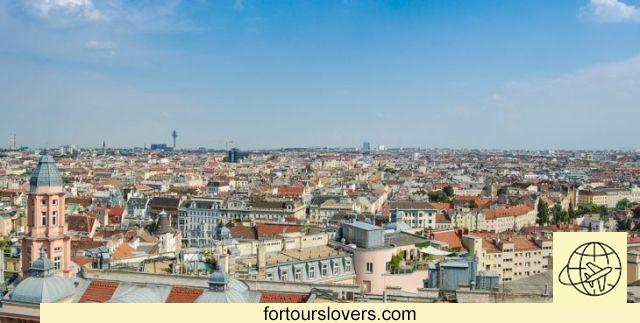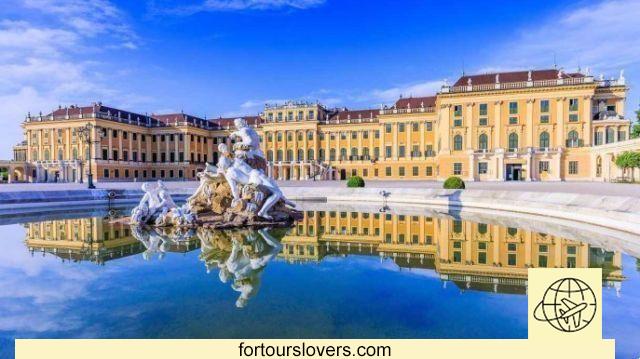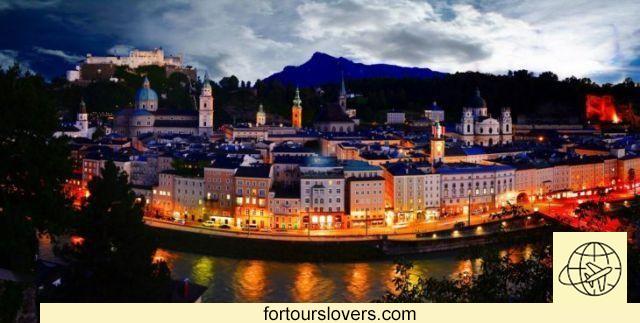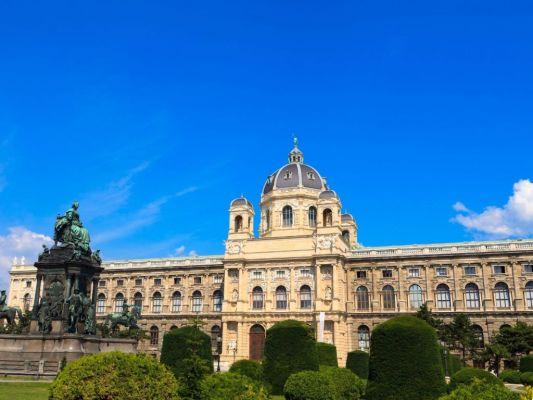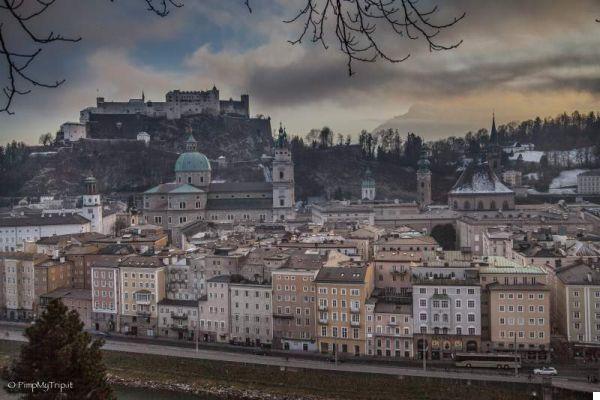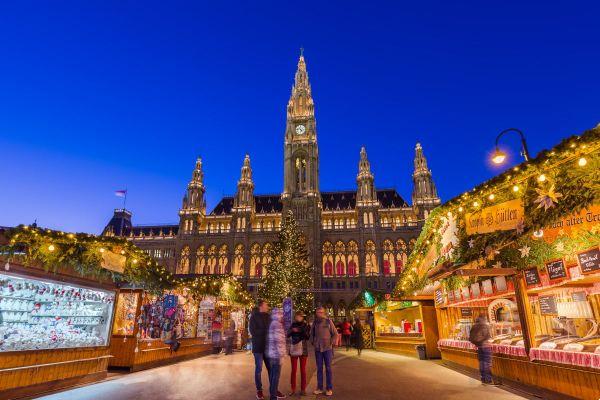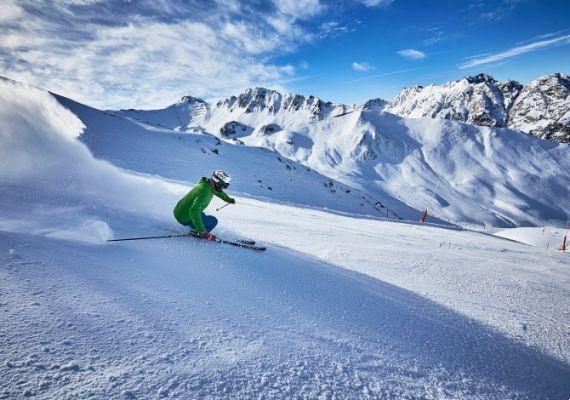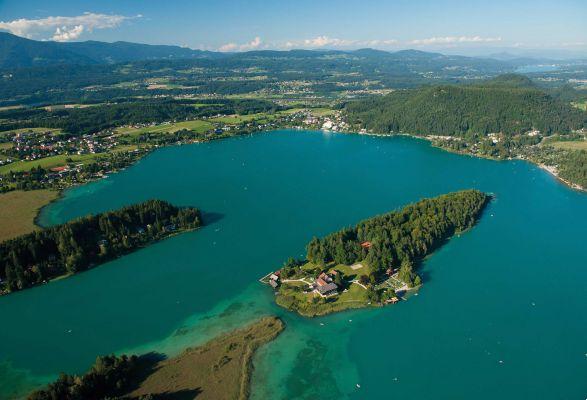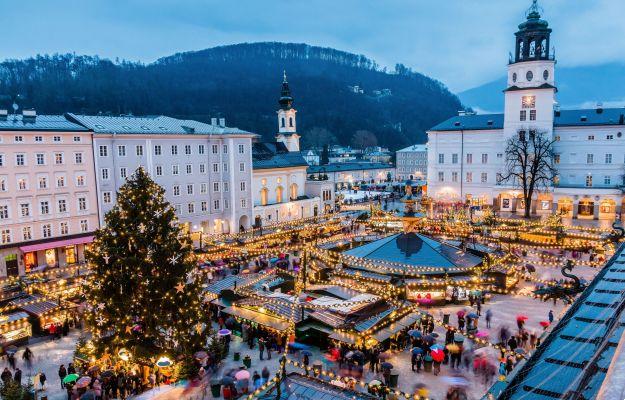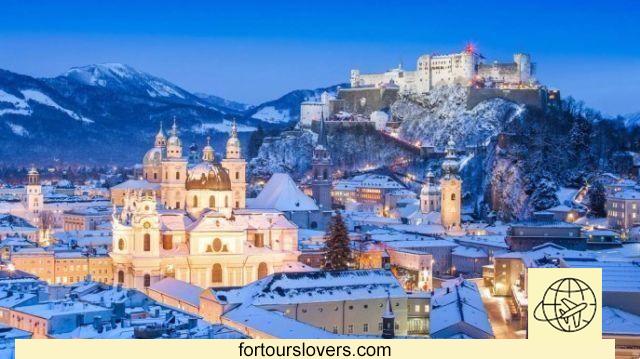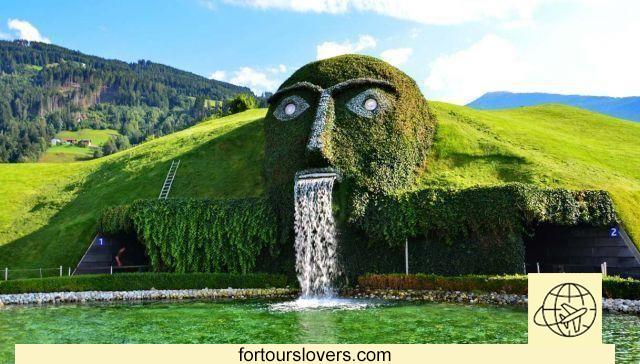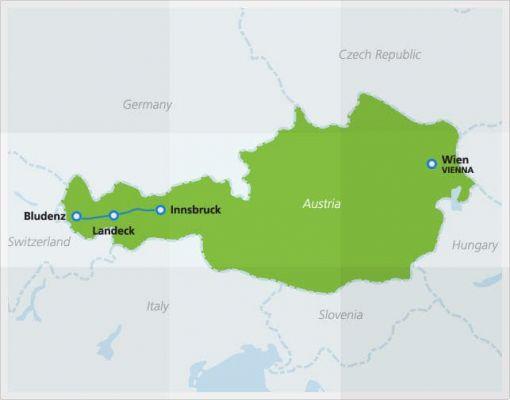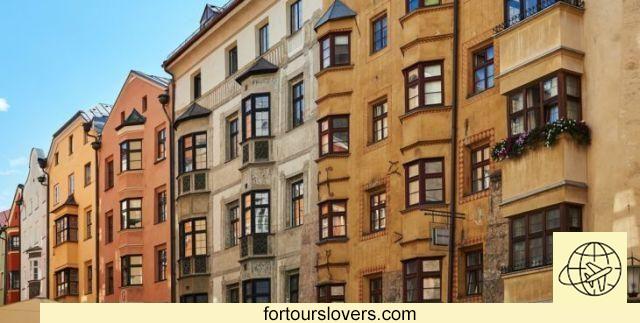
Innsbruck
11 things to do and see in Innsbruck and 1 not to doThanks to extraordinary environmental location, small size, To beauty of the historic center andefficiency of public services, Innsbruck has been one for years renowned tourist destination. Obviously the winter tourism attracts tens of thousands of visitors, but also in the rest of the year, especially during the summer, the city attracts many tourists eager to live in contact with nature and Tyrolean alpine landscapes. This because mountains and cities are very close like perhaps no other place in Europe, to the point of being able to go from a walk in the center to over 2000 meters of one of the surrounding peaks in just 30 minutes. In short, one perfect city for a regenerating holiday, even just the space of a weekend. Below, we review the main attractions of Innsbruck with the caveat that this is necessarily a partial list, however useful for familiarizing yourself with the places. Happy reading.
1 Arc de Triomphe
Nine times out of ten, an Innsbruck discovery tour starts fromArc de Triomphe (Triumphforte) at the end of Maria-Theresien-Straße, the main artery of the city. The monument, which deliberately recalls Roman architecture, was built instead in the XNUMXth century. The work was commissioned by Empress Maria Theresa of Habsburg (hence the name of the street) as part of a more extensive city restyling decided on the occasion of the wedding of her son Leopoldo. A historic building, therefore, soon risen to symbolic starting point of the walk that leads to the historic city center. To be seen!
2 Golden Roof
At the beginning we said that one of the advantages of Innsbruck lies in the small size of the city and its historic center, the latter scattered with Gothic, Baroque and Renaissance traces. Of these architectural testimonies the most important is undoubtedly the Golden Roof (Goldenes Dachl). It is the sloping roof of a noble palace covered with over two thousand sheets of gilded copper. The work was commissioned by the Emperor Maximilian I, to whom the museum inside the building is also dedicated. Very informative museum to visit even if, it must be said, most tourists linger on the roof in question, under whose golden tiles it is almost mandatory to take a souvenir photo. In addition, right in front of the Goldenes Dachl there is the Helbling House (Helblinghaus). It is a 4-storey building whose facades are entirely decorated with cherubs, flowers, shells and other reliefs made in the first half of the XNUMXth century. To have an overview of the historic center of Innsbruck, however, just walk a few tens of meters and climb the Civic Tower (Stadtturm) which we will discuss more fully in the next point.
3 Civic Tower
As previously mentioned, a stone's throw from the Golden Roof is the Civic Tower (Stadtturm) another essential stop on a tour to discover Innsbruck. You have to climb about 130 steps to reach the viewpoint at 31 meters (the tower, overall, is 51 meters high) from which you can enjoy a complete view of the city, with the possibility of better seeing the urban and architectural details of the historic center, such as also the surrounding mountainous reliefs. Among other things, the spiral staircase leading to the top (see photo) is quite easy in spite of the number of steps, which makes the visit even more attractive, the entrance cost of which is far from prohibitive. In short, the only warning is that of don't forget your camera. It would be a real shame not to capture the beautiful sky line of the capital of Tyrol. Not to be missed!
4 Hofkirche
La "Church of black men" (schwarzmander), as the Church of the Imperial Court, is another unmissable stop on a holiday in Innsbruck. The black men in question are the bronze statues placed to guard the cenotaph in honor of Maximilian I. The monument, which stands out for its grandeur and quality of decorations, was commissioned by Emperor Ferdinand I who thus intended to celebrate his grandfather and the power of the Holy Roman Empire (even if, it must be said, the remains of Maximilian I are not kept inside of the sarcophagus). The statues, for their part, recall the emperor's ancestors (there are also his two wives) and prominent personalities who distinguished themselves for courage and heroism. It is not over, because within this Gothic church with three naves the remains of Andreas Hofer, hero of the Tyrolean resistance against the Napoleonic troops. In short, a church that celebrates both the glories of the Empire and the Tyrolean nationalism that established itself during the XNUMXth century. From here thehistorical-religious importance which did not take long to translate into tourist attraction much appreciated by visitors.
5 Hofburg
While not equaling the grandeur and size of the Imperial Palace in Vienna, theHofburg in Innsbruck has a prominent place among Austrian buildings. Its genesis follows a fairly common plot: from the residence of the Dukes of Tyrol in the fourteenth century, the fortress, over the centuries, has expanded more and more according to times and protagonists of the history of the territory. Between 1754 and 1756 the building underwent a radical revision in the Baroque style. To want this profound restructuring was the Empress Maria Theresa, who was also responsible for the construction of the Arc de Triomphe mentioned above (see the first point). The early nineteenth century, however, were quite tormented, as the building passed into the hands of the Bavarian rulers allied with the Napoleonic troops in the conquest of Tyrol. To follow, however, there was the reconquest by the hand of Andeas Hofer and the subsequent passage - just before the mid-800th century - in the hands of the Habsburgs. For a more detailed picture of the history of the building and the things to see inside, consult the place: www.hofburg-innsbruck.at (Spanish version available).
6 Cathedral of San Giacomo
After Hofkirche (Church of the Imperial Court) and Hofburg (Imperial Palace) it is the turn of the Domkirche St Jacob. The Cathedral of St. James is located in the heart of Innsbruck, in the very central Cathedral Square. Let's talk aboutthe most important place of worship in the city, as well as one of the most precious testimonies of the Tyrolean baroque. What is striking is the imposing external façade, characterized by a large number of windows and two identical towers, an important visual reference for those who stroll through the streets of the city. The interior, with a nave and a Latin cross, is striking for the large quantity of stuccoes, decorations and sacred canvases. One in particular, the "Madonna of Cranach", painted by Lucas Cranach the Elder, it soon became an important Marian symbol, far beyond local borders. And speaking of symbols, it should be remembered that the Cathedral of Innsbruck is a stage of the famous "Santiago's walk" traveled every year by thousands of pilgrims. To be seen!
7 Bergisel ski jump
Among the main attractions of Innsbruck there is certainly the Mount Isel ski jump (Bergiselschanze). This hill about 800 meters south of the city is of considerable historical importance: in fact, the militias in the service of Andreas Hofer, the hero who freed the city from the Bavarian yoke, restored the coveted independence to Tyrol, gathered there. Therefore a historical place that in the course of the '900, however, was transformed into modern ski resort arriving to host twice - in 1964 and 1976 - the Winter Olympics. In 2001 this futuristic ski jump was added to the existing ski facilities designed byarchistar Zaha Hadid. We are talking about a work of exquisite workmanship that did not take long to establish itself as a tourist attraction, also because, in a far-sighted way, together with the actual sports facility, a gondola lift, a lift, a panoramic café and a belvedere terrace were also built. The Mount Isel ski jump can be easily reached with the “The Sightseer” tourist bus. For more information please refer to Official site: www.bergisel.info/at (Spanish version available).
8 Ambras Castle
Just outside Innsbuck (approx. 4 km) is the "Oldest museum in the world". Thus is known the Ambras Castle (Schloss Ambras) dell 'Archduke Ferdinand II (1529 - 1595). The fame is linked to the passion for collecting of this scion of the Habsburg dynasty capable of collecting armor, weapons, portraits, natural, scientific, musical, precious objects, etc. in the walls of his Tyrolean home. It was not, however, a matter of compulsive accumulation. On the contrary, in Ferdinand II's passion for the arts and knowledge there was research and systematicity. And it was thanks to these characteristics that Castel Ambras was renamed a “museum”, especially since here, in the heart of Tyrol, the collections were made available to a wider audience than the royal family and nobles. An opening to the popular strata which demonstrated the profound humanism of Ferdinand II protagonist, among other things, of a marriage outside the royal circle, a “scandalous” circumstance for that time. In short, the Ambras Castle is not only an unmissable stop on a trip to Innsbruck; it is above all a fundamental piece for anyone wishing to deepen the European Renaissance culture. Not surprisingly, it is branch of the Vienna Museum of Art History. For more information on the history, the works on display, the temporary exhibitions, the timetables and the ways of visiting, consult the Official site: www.schlossambras-innsbruck.at (English version available).
9 Swarovski crystal worlds
About fifteen kilometers from Innsbruck, in the town of Wattens, there is the headquarters of Swarovski, a leading company in the production of crystal products for over a century. A global brand, therefore, which however has maintained a strong bond with the territory, to the point of having created here, in the heart of Tyrol, a sort of enchanted world with incredible attractions for adults and children. We are talking, in fact, of the “Swarovski Crystal Worlds” (Swarovski Kristallwelten) created in 1995 to celebrate the company's centenary. An attraction that in just over twenty years has attracted over twenty million visitors rightly enthralled by the "Chambers of Wonder", the "Garden", the "Crystal Cloud" installation, the "Playground" for children and the countless activities which, especially during the summer period, enliven the visit of tourists. Ideal for a trip out of town for those staying in Innsbruck, made even easier by the frequency of connections between the capital and this "little-big" city of about 8000 inhabitants. For more information see the Official site: kristallwelten.swarovski.com.
10 Alpenzoo
Among the essential stops of a holiday in Innsbruck there is certainly theAlpenzoo, the highest-altitude wildlife park in Europe. It is found at slopes of the Nordkette, one of the mountain ranges that surround the capital of Tyrol. Thanks to the spectacular cable car designed by the star architect Zaha Hadid, and which we will talk more about in the next point, it takes only about twenty minutes from the city center to reach this park which has been active since 1962. A visit suitable for young and 'hours, they can learn more about alpine fauna while having fun among educational paths and outdoor games. Inside the Alpenzoo live woodpeckers, blackbirds, beavers, ibex, lynxes, wolves and an infinity of other animals, including several endangered species, followed daily by scientists and park maintenance staff. Structure that achieves a double objective: it contributes, in fact, to tourist fortunes of Innsbruck and, at the same time, al maintenance of alpine fauna. Not to be missed! For more information see the Official site www.alpenzoo.at (Spanish version available).
11 Hungerburgbahn
At the beginning of the article we mentioned that in just half an hour it is possible to go from the historic center of Innsbruck to the more than 2000 meters of the Nordkette. The circumstance is possible thanks to a funicolare active since the early 900s, but which in the first decade of the XNUMXst century underwent a radical transformation thanks to the intervention of Zaha Hadid, world-famous architect, also in Innsbruck, also responsible for the Bergisel ski jump (see point 6). Thanks to the futuristic project by Zaha Hadid theHungerburgbahn has become atourist attraction in its own right able to attract many tourists because of its futuristic style. In fact, despite the stops are only 4 (Station Congress - Löwenhaus - Alpenzoo - Hungerburg) and the seats just over a hundred, there is the crowd to get on this amazing funicular at the end of which, after a short walk it is the cable car that leads to the 2000 meters of the Nordkette summit. To do! For more information: nordkette.com (English version available).
1 Don't stay too long
Taste the sacher torte; visit the Tyrolean Regional Museum Ferdinandeum; stroll along the riverside; enjoy the atmosphere of the Christmas markets and many other opportunities that we have not mentioned but which further enrich the visit in the city. In spite of so much variety, however, Innsbruck is a city that gets around very well in two or three days. Therefore, if you are planning a longer vacation it is better to extend it to one or more places in the surrounding area. The choice is not lacking here too. Otherwise a weekend is just fine, especially during the Christmas period.




